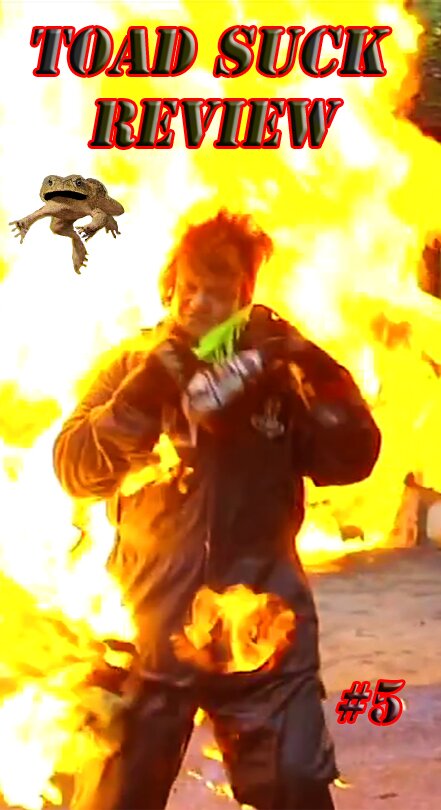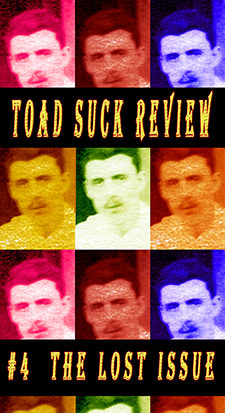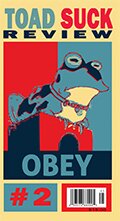Over the years, working in the field of natural resources, I came to explore many out-of-the-way parts of Nevada. I first learned of Beatty while attending a “bat blitz” near Tonopah, where thousands of bats made abandoned pit mines their home. Beatty was an unexpected stop along the way, an oasis in the middle of the desert. The obligatory pit stop was made at the Death Valley Candy Company, where everyone stops. Here you can find an assortment of candy that lines the walls with choices from your childhood. Then there is the ice cream shop within. Anyone who’s visited it will swear it’s the best-tasting ice cream in southern Nevada. That was my early experience with the town and I never believed that folks would purposefully travel there for fun.
Beatty, a rural town, lies two hours from Vegas in the middle of nowhere. It sits somewhere between the “armpit of the nation” (Battle Mountain), and one of the stellar sites for stargazing. It is a land of incongruities—an oasis in an otherwise rough, bleak landscape.
The Nevada Commission on Tourism came up with this tag line for the town, “Anything but typical.” If you look up Beatty, Nevada online, you’ll find out that the town is populated with “around 1000 very friendly people and a few old knuckleheads.” The town does not give an immediate impression of community identity. Folks move to Beatty to get away from the Vegas image, and from the “rules” of urban society (not that Vegas has rules). Folks aren’t looking to fit into any social group. It’s a quiet town, where folks walk to where they’re going, or else ride horses or motorcycles. There’s an active cowboy group, who practice the old cowboy ways for show at Beatty Days and other events. Bikers are another popular contingent in town, and have fun celebrating their “art form.”
In a small urban forest of cottonwood trees interspersed with small houses, the main attraction is the Amargosa River. I can’t say that there is a main industry. Most people who have been attracted to move out here do so for the non-proximity to the big city, Las Vegas. I guess you could say that a big day in town would be a trip to Pahrump, which only several years ago got a Wal-Mart. That’s when people started moving out of Pahrump, for more remote locations, to get away from all the rules. Both the rural atmosphere and the lack of urban ordinances are attractive to many folks who are looking for some freedom in their lives. I like to consider a trip to Beatty like a day spent in the country. Still, city slickers like me might feel a little tenacious after a while, longing for a reliable source of conveniences.
Then there are the folks who like the rural atmosphere and homesteading. There are couples who want to raise their kids in an atmosphere that doesn’t succumb to the pressures of urban life. There are plenty of retired folks, just looking to spend their golden years in an easy, comfortable atmosphere. Some of the residents work in the area, in jobs that obligate a rural atmosphere, like land management or commercial ventures working the land. Demographics show that folks are of a modest income and quite conservative. They value what “old Nevada” is all about—making a living and preserving their way of life.
Of course, some folks just visit for the brothel. (Brothels are illegal in Clark County, where Las Vegas sits, but legal in the rural counties.) But the brothel is a community player far beyond those visits. One of the locals told me the story of a National Geographic reporter who knocked on the door of the brothel and asked to see the toads. The ladies had never had that request before! Although it seems like a real mix of different interests that cohabitate the town, they have all been able to symbiotically come together to achieve a common purpose: saving the Amargosa toad. These days Beatty’s claim to fame is based on the Amargosa toad. The middle of the Mojave Desert is not a place you would think of looking for toads, but it is the site of an oasis uniquely suited to this species, Bufo nelsoni. The Amargosa toad is not a common species, and doesn’t loudly make its presence known. But the locals know all about it. The surrounding Oasis Valley in southern Nye County is the only home of this species, encompassing twelve miles along the Amargosa River. It is found nowhere else in the world.
The toad is truly an unsung hero. Unlike other toads, it has no song. The females are decidedly quiet and the males, rather than having a mating call, only squeak when trapped. These toads could be called “limeys,” as they are somewhat lime to olive green in color, with brown “warts” and a pronounced lime-colored strip down the back. They could also be called limeys due to their preference for alkaline waters of the desert. These small quiet creatures live around the river valley, and breed in spring-fed pools that may only last long enough for tadpoles to transform into toadlets. And they’ve been having a rough time.
But Amargosa toads are not the only amphibians having trouble surviving. Frogs and toads around the world are facing threats from disease, global warming, pollution, agriculture, invasive species, trade collection, and habitat destruction. Wetlands are being lost at an astounding rate. Higher temperatures and drought are drying up the wet areas that these animals require for breeding. A deadly disease called the chytrid fungus is annihilating certain populations of frogs and toads. Biologists estimate that 30 percent of amphibians worldwide are currently in danger of extinction.
Here in Nevada, the driest state in the nation, the situation is exaggerated. In a place where only 1.5 percent of land area is covered with open water or vegetated wetlands, the aquatic ecosystems are not only vital but quite precarious. Wetlands in Nevada comprise the majority of the sites listed as highest priority for conservation. The Nevada Natural Heritage Program states that a large proportion of the most sensitive wildlife species, including fish, amphibians and aquatic invertebrates, occur at these wetland sites. The main threats for these sites are urbanization, water developments, grazing, invasive species, and changing fire cycles. Surprisingly, Nevada ranks 11th among all states in total species diversity and, unsurprisingly, 3rd among all states in having the highest percentage of species at risk. The majority of those are native fish.
Certainly our friend the Amargosa toad is affected by all of these threats and more. Overgrazing by range cattle and feral burros, as well as invasive weeds and compaction of soils by land-use activities change the vegetative ecology for the toad’s habitat. Other threats include intentional and unintentional trampling, and spring-fed pools drying up. At one time the toads were drying up so much that a little local gift shop called, of course, The Amargosa Toad, once had the little mummified toads for sale. Fortunately, those days are over. But the toads still face predation from non-native species such as bullfrogs and crayfish. Development is obviously not as much of a problem for Beatty as it is in urban areas. Still, breeding pools have been lost to off-road recreation, mining, ranching, and groundwater development. Invasive weed species, such as the tree-like, water-sucking tamarisk, and the aggressive Russian olive, change successional stages from grassy pools to dry open forest. For fecundity purposes, the Amargosa toad requires the shallow open water of small pools emanating from hot springs or from rains, mostly free of vegetation with a small amount of algae to feed on. Adults live in moist areas around the river and can be found underneath street lights at night, feeding on insects that.
How long has it been a problem? In 1994, a lone researcher was exploring the ecology of this rather obscure species and found only thirty-two individuals throughout its habitat. A twelve-month study was initiated to gather further evidence for an endangered species petition. The Center for Biological Diversity first filed the petition to list the Amargosa toad under the Endangered Species Act (ESA), then petitioned again in 2000. Both times, the US Fish and Wildlife Service found the ESA listings to be unwarranted, with certain caveats. The reasons included an increase in the number of toads found over the years, an awareness of the threats that needed to be addressed, promising habitat mitigations, and a coming together of stakeholders. The Fish and Wildlife Service stated that as long as a conservation plan was in place, the toad was in good shape.
The locals were pretty upset when the listing was proposed. After all, they had seen what happened to the community around Ash Meadows when the Devil’s Hole pupfish was listed. Many of their friends and family lost homes, ranches, and livelihoods when the groundwater pumping had to be stopped. That’s where the anti-government sentiment stems from. Some folks just wanted the toad to go away and proposed “toad-stomping” jamborees. Whether or not these events actually happened is subject to speculation. The atmosphere was quite contentious in the beginning. One can almost imagine a feud such as the Hatfields and McCoys. This was the land where the Sagebrush Rebellion resurgence occurred, pitting local agencies against Federal land management authorities.
The citizens first attempted to come together for the toad when the Nye County Board of Commissioners told the Beatty Town Advisory Board to form a committee to address the problem. A few folks stepped up to the challenge. In all, seventeen people came together for the purpose of preventing the ESA listing. These included both pro- and anti-toad factions. The group was named the Beatty Habitat Committee. Hostility was rampant at early committee meetings, with a great deal of animosity towards environmentalism. The toads were labeled “a damn nuisance.”
At some point the committee was moved from the jurisdiction of the Town Board to the Beatty General Improvement District (BGID), with the hope that under their auspices, things would change. They didn’t. With BGID, which is something akin to a parks and recreation agency, the group still could not take actions without the Town Board approval and they seemed to be stuck in second gear. Word was that certain folks were sabotaging the efforts. There was another group that had formed, strictly championing for the toad, called the Friends of the Amargosa Toad, which was unhindered by Town Board politics. Later, the two groups would merge, as the Habitat Committee separated from BGID and became free to accomplish their toad-oriented goals. With time, the Town Board and the BGID membership changed and all the groups started working together. People were finally seeing the ties between their town’s ecological and economic needs.
One member said that the tide started to change when the antagonists got tired of fighting a losing battle and walked away. Some moved out of town, and some just shut up. That left the protagonists free to accomplish change for the good of the toads. The group is smaller now, but more focused. Progress has been made more easily and everyone feels a lot better.
Some of the private landowners have donated their land for toad habitat, including the owner of the Stage Coach Casino, who had some strips of land right along the river. The Nature Conservancy worked out an agreement to acquire the Torrance and Parker ranches, to be set-aside habitat for the toad. Even Angel’s Ladies, the local brothel, is supportive of the toad. With spring-fed pools on their property available for skinny-dipping, patrons can “swim with the toads.”
Although there is no “toad management protocol,” each landowner is finding the best way to help the toad on his or her property. Each landscape presents its own unique challenges that have to be addressed. The primary goal is to maintain the springs and surrounding habitat at an early successional stage. Amphibians are very resilient and populations can recover once the threats are removed or reduced. The entire Amargosa toad population now numbers over two thousand individuals.
A group called STORM-OV, Inc., or Saving Toads thru Off-Road Racing, Mining and Ranching in Oasis Valley formed not only for the purpose of helping the toad, but to improve the reputation of off-road users. For these folks, mitigation means digging out overgrown pools with their land-moving equipment, and lining them to prevent weed growth.
A newer group, the Amargosa Conservancy, has stepped in to act as fiscal agent for the Habitat Committee, and the combined group is now able to seek out and apply for grants that support conservation projects such as theirs. They are also able to accept donations of land. A recent donation of land was received from a local family. Three lots comprising a quarter of an acre in the Amargosa River corridor were made into a “pocket park” that will not only draw visitors with its elevated view of the river, but will also show people what is being done to help the Amargosa toad. Interpretive kiosks along with a couple of ponds with resident toads aim to educate visitors on the recovery of the species. The park is part of a trails project for the community. The habitat and trail system will bridge the gap between the toad and economic income. It will protect the toads’ habitat while providing a recreational opportunity and a tourist attraction.
It’s clear that the turnaround in attitude has been a good influence for the community. Some holdouts realized that land on the riverfront couldn’t be used for anything else, anyway. So maybe it was better to cut their losses and gain a favorable image from the community. Now it’s “in vogue” for community members to avoid trashing the riverbed with tires, oil, and other assorted rubbish. One longtime Beatty Habitat Committee member recruits local children to do river cleanups, luring them with the temptation of free hot dogs.
It’s a strange sort of ecology when folks from different walks of life come together to mitigate the problems of a creature rather low on the food chain. Each person has found a niche in the ecosystem of the Oasis Valley, and all species are benefitting. The citizens of Beatty may have morphed from wild west characters into a community wanting to share a little bit of their “treasure” or culture. Even if they don’t socialize together, they are working together for a common good.
The community has come a long way. Best of all, the voiceless Amargosa toad now has a voice, and it’s the voice of the citizens of an otherwise unknown town in the rural heart of a sometimes forgotten state. So what does the future hold for this little champion of the backlands? Folks are fired up and they’re hoping that publicity of the toad’s travails will draw more interest for the town. Local news outlets have taken on the cause and the story has already made national news.
Community events help spread the word as well. During Beatty Days 2010, an effort was made to provide outreach for the toad, as well as for other wildlife species in the Oasis Valley. Then there’s the advertising. While the ladies from the Friends group sell t-shirts, caps, and mugs to fly the flag of the toad’s plight, the Death Valley Candy Company sells candied toad brains. That’s one way to raise awareness with the kids. Perhaps the toad can join Nevada’s short list of wildlife heroes, including Mojave Max, the Devil’s Hole pupfish, and the pika.
All in all, ecotourism may be the saving grace of Beatty and many other places in Nevada. For a state that’s been virtually bankrupt, new industries have to be considered. The prime industry for Nevada has always been tourism, but tourism has not focused on the natural features of the state. Drawing folks in not only for entertainment but also for outdoor recreation is a promising alternative for the future. So the next time you denigrate Nevada for being a wasteland, think of the strange ecology that can go on in such a place and consider visiting the other attractions that lie off the beaten track.
 '
'
 '
'
 '
'
 '
'